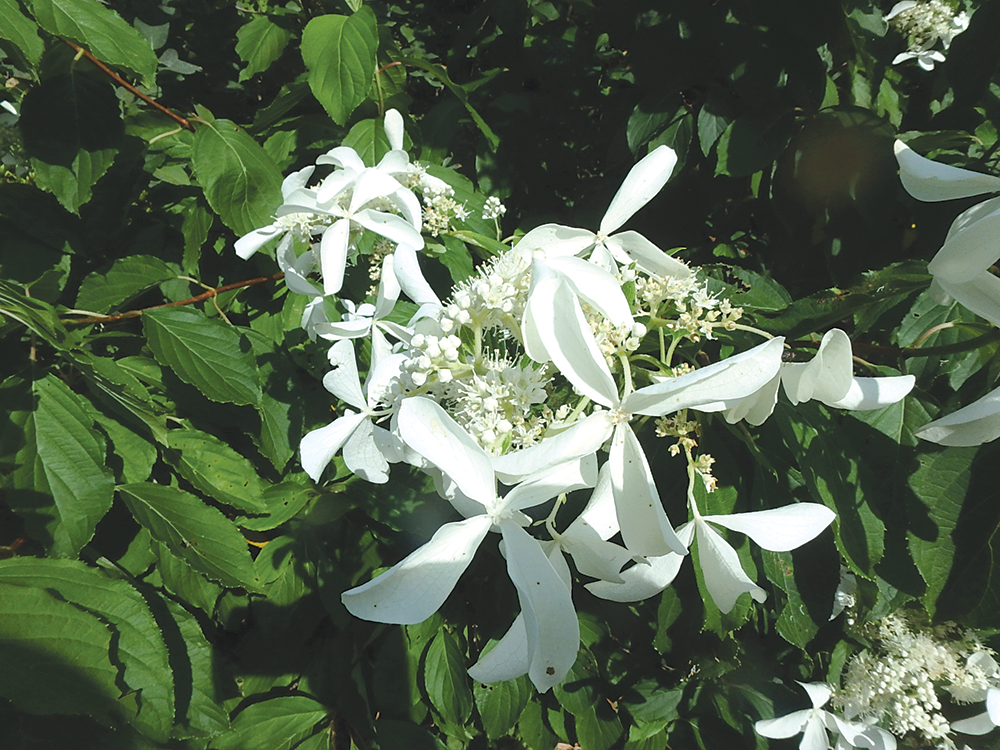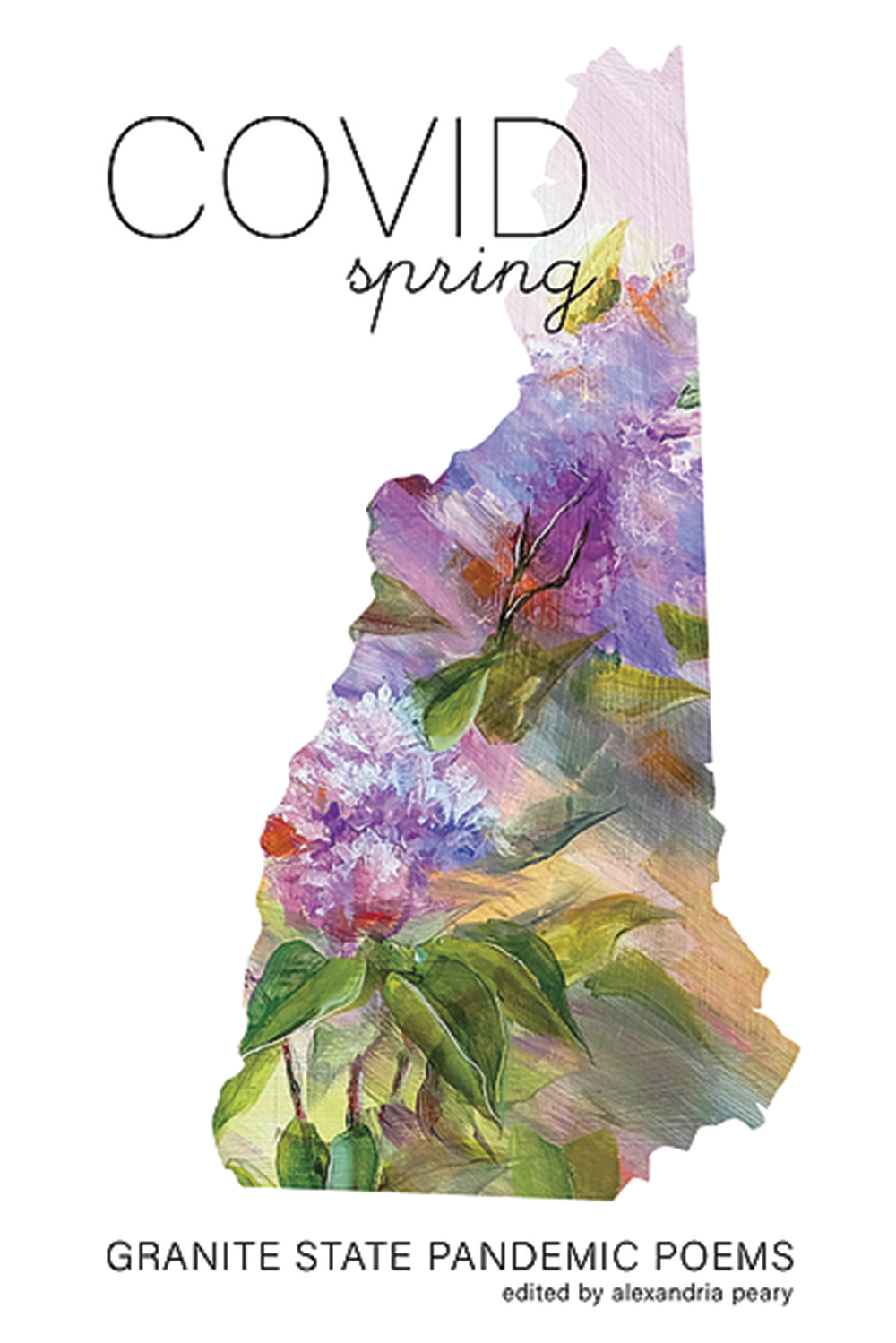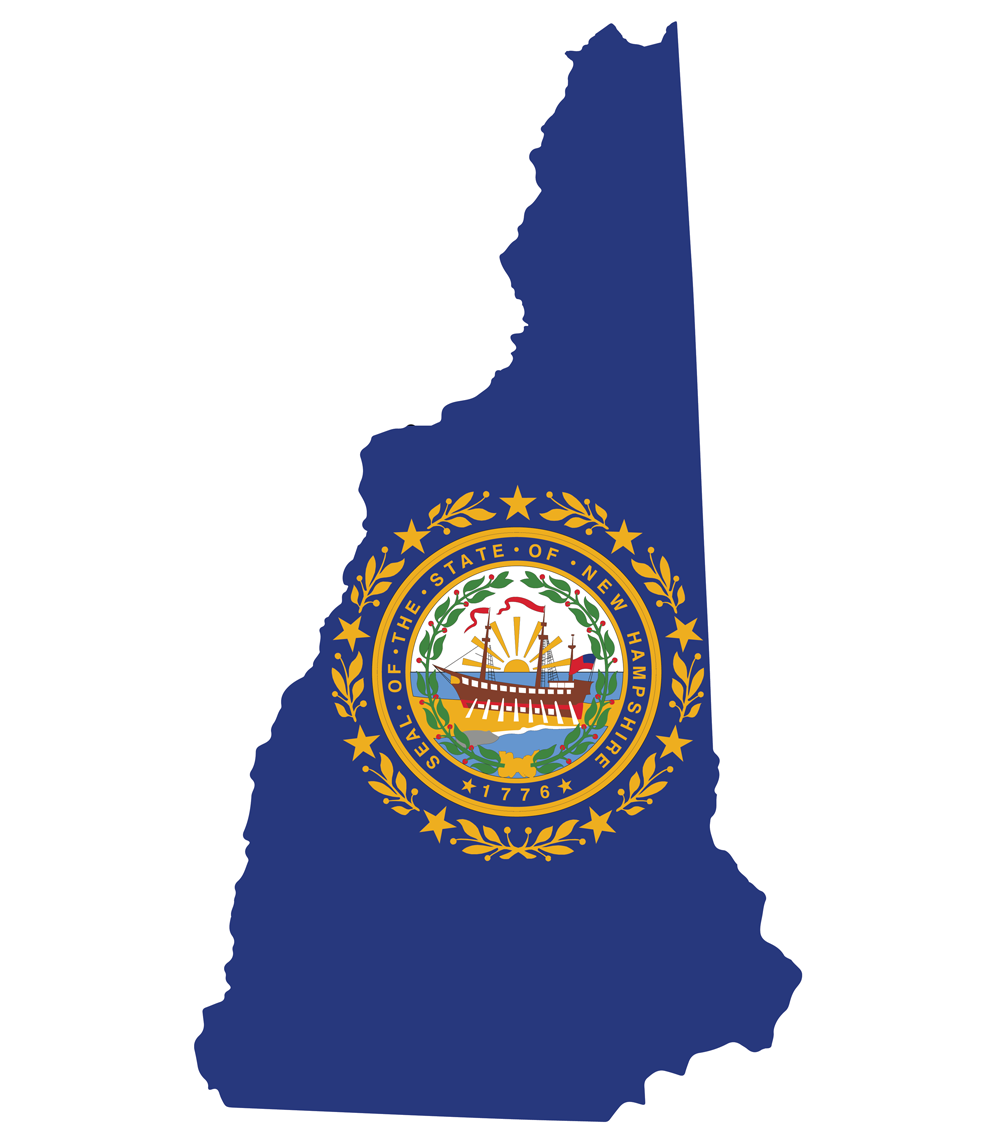Now in full bloom
When I was a boy, I always took note of cemeteries as we drove by them. I’d lost a beloved grandfather, the original Henry Homeyer, and my mother’s mom. I was taken with a shrub or small tree in cemeteries that I called either “the snowball bush” or the “cemetery bush.”
Back in the day what I now call the PeeGee Hydrangea (Hydrangea paniculata ‘Grandiflora’) was present in every cemetery. They bloom for months, require no work other than planting, and will grow anywhere. Now there are dozens of species and varieties of hydrangeas, offering a great choice for small gardens — these never get huge, like a maple or an elm.
In the nursery trade the PeeGee hydrangea has fallen out of favor, mostly. Now Limelight, Pinky Winky and others with jazzy names and bigger flowers are more popular. But I love my PeeGee that I planted some 25 years ago. It is blooming with over 100 large white flowers now. It’s about nine feet wide and eight feet tall. Like most hydrangeas, if I wait until just before frost and cut some flower stems to put in a dry vase, they will look good all winter — and longer.
Most hydrangeas like full sun or part shade, good soil and adequate moisture. Some, like the panicle hydrangeas, bloom on new wood, while others — those that bloom early in the summer — bloom on buds developed the summer before, also called “old wood.”
The blue hydrangeas (H. macrophylla or big-leaf hydrangeas) generally bloom on old wood, and for those of us in the northern part of New England, that is unfortunate. Our tough winters ruin the flower buds, so the plants don’t bloom in June as desired. Nurseries in the South grow them, ship them to us in full bloom, but after Year 1 we are lucky to get three blossoms in September. Period.
Then along came Endless Summer, a big-leaf hydrangea that promised to bloom all summer long. I tried it, and called it Endless Disappointment. It died back in the winter, grew, but rarely flowered. Newer varieties are out there, and may be tougher, but in Zone 3 or 4 I say buy them in bloom and use as annuals. Not only that, blue hydrangeas produce pink or insipid colors if the soil pH is not acidic enough. ‘Nuff said.
I like my Pink Diamond, a panicle hydrangea with strong stems and fewer florets per flower head than the PeeGee. That means it doesn’t get weighed down by rain and drop to the ground like many other hydrangeas. It starts out white, then gradually turns pink. It is an excellent cut flower, too.
What about shade-growing hydrangeas? There are two nice ones. H. arborescens Grandiflora, also known as Hills of Snow, does well in shade. Its pompoms are much smaller than those of Annabelle, another of the same species, so it does not flop much after a rain. I like it better. It gets to be five or six feet tall and wide if left to its own, but many people cut it to the ground in late winter. The vigorous new growth will be shorter, and the pruning invigorates the plant.
My favorite shade hydrangea is the climbing hydrangea (H. anomala ssp. petiolaris). This tough vine will grow on the north side of a wall and can attach itself to brick or stone. It is slow-growing when young but after five years or so becomes quite vigorous. I attached the stems of mine to the side of my barn when young, but later the stems slipped through cracks in the barn and held on. Mine has even bloomed inside the barn! Climbing hydrangea has showy white, sterile petals on the outer rim of each flower panicle, and less showy, fertile flowers in the center. It blooms in June and the white petals stay white all year, so the flowers always look good. The vines have shaggy exfoliating bark, which is interesting in winter, too.
I recently attended a Hydrangea Walk at the home of Chris Wilson of Newbury, Vermont. Chris is a nursery professional, having worked at EC Brown Nursery in Thetford, Vermont, for over 35 years. Chris collects hydrangeas, lilacs and daffodils and opens his gardens three times a year to view them. This time we all wore masks and practiced social distancing. We didn’t want, as Chris said, “to die to see a hydrangea.” Chris has at least a couple of dozen different kinds of hydrangeas — and a good sense of humor.
Chris had two hydrangeas I had not ever seen before that I like. The first, called Great Star (H. paniculata), was first discovered in the gardens of Princess Greta Sturdza in Varengeville Sur Mer, Normandy, France. It appeared as a naturally occurring branch mutation of an unnamed seedling of Hydrangea paniculata. It has very prominent wide, strap-like sterile florets that are star-like. I hope to find a specimen and plant it in my garden.
The other hydrangea I saw there is another that does well in shade, H. paniculata White Moth. Chris had it tucked in near a large tree, and it was blooming nicely.
Don’t have a hydrangea? I highly recommend them. Most have blossoms now, when most flowering trees are done for the year. So go to your local family-run garden center and see what they have. I bet you’ll find something you like.
Featured Photo: Hydrangea “Great Star”. Photo by Henry Homeyer.






